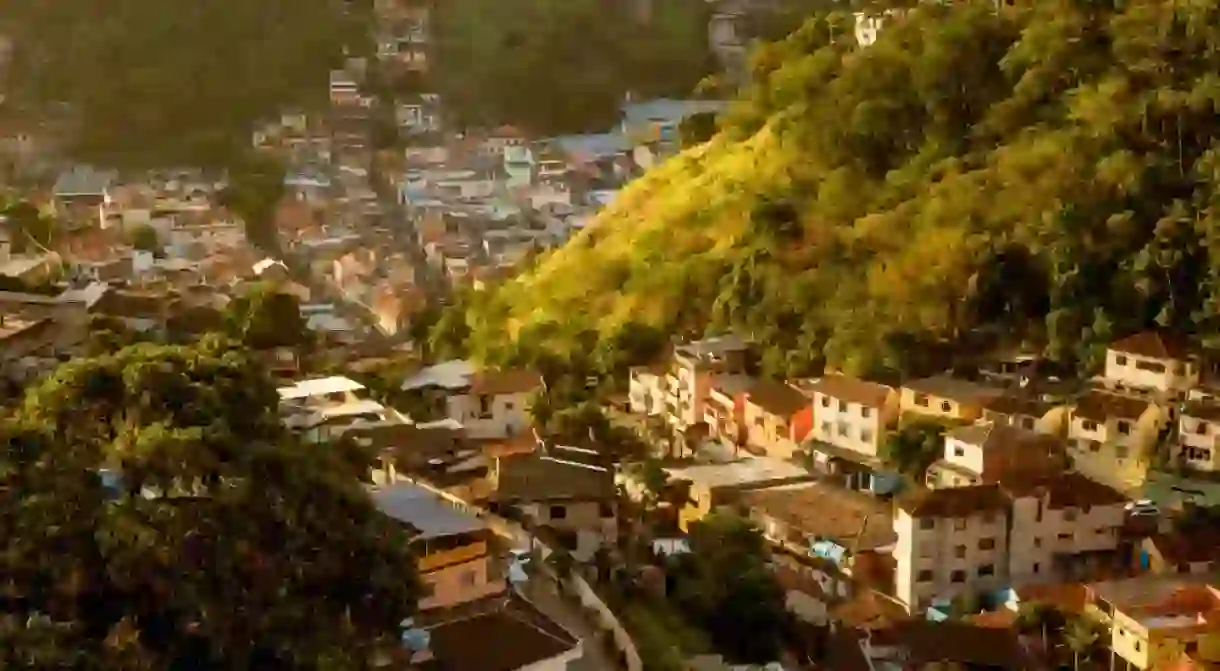The Top Things To See And Do In Santa Teresa, Rio de Janeiro

Rio de Janeiro’s Santa Teresa neighborhood provides visitors with the quintessential Brazilian experience. Winding narrow streets and colorful historical buildings characterize the bohemian area, while from the top of Santa Teresa Hill, some of Rio’s best views of lush landscapes and Guanabara Bay unfold. This list covers the best places to check out while in the inspiriting and beautiful Santa Teresa.
Escadaria Selarón

The Selarón steps are one of the most famous tourist attractions in Rio de Janeiro. Just bordering the neighborhood of Lapa, a trip to Santa Teresa would not be complete without taking a photo on these iconic flights. The steps were designed by Chilean artist Jorge Selarón and feature intricate, brightly colored mosaic tiles. Selarón collected the steps’ tiles from the streets of Rio and then accepted additional tiles donated by visitors from all around the world; a true celebration of global unity and Brazilian energy.
Museu da Chácara do Céu
Located in the center of the Santa Teresa neighborhood, Museu da Chácara do Céu is one of Rio de Janeiro’s most comprehensive art museums. Deriving from the private art collection of the Brazilian businessman Raymundo Ottoni de de Castro Mayo, the museum features Brazilian art, European works and the Brasiliana collection, which consists of vintage Brazilian memorabilia. The museum prides itself on showing extremely private and rare pieces of art to the public, making a trip to the museum a valuable one.
Tram do Santa Teresa and Museu do Bonde

There’s no better way to get to Santa Teresa from Rio’s city center than on the tram. The historic, bright yellow tram takes passengers from the center of Rio de Janeiro up the Santa Teresa Hill and ends in the Santa Teresa neighborhood. Built in 1877, the Santa Teresa Tram is the oldest electric railway in Latin America. Visitors interested in the detailed history of the tram should visit the Museu do Bonde.
Centro Cultural Municipal Parque das Ruínas
Santa Teresa’s municipal public park is located in the ruins of the old mansion belonging to Laurinda Santos, a patron who would gather artists and intellectuals for social gatherings in the early 20th century. The mansion has been partially restored and is now used as a cultural center hosting various exhibitions, events and special programs. The ruins’ grounds are also stunning. Take a walk around the old mansion, imagine some of Brazil’s finest inhabitants conversing over sophisticated topics a century ago, and enjoy the breathtaking views of Rio and Guanabara Bay.
Armazém São Thiago
Bar, Restaurant, Brazilian

If you’re looking for something to do at night, then look no further than Armazém São Thiago, Santa’s Teresa’s trendiest restaurant and bar. Situated in a historic warehouse dating back to 1917, the bar strives to keep the location’s name and appearance alive for the sake of tradition, a value close to every Brazilian’s heart. The bar’s ambiance is old school Brazilian and feels authentic, as almost everything in it is an antique. Enjoy the historic atmosphere while drinking a Brazilian beer and chatting with a local sitting nearby.
Mercado das Pulgas
Market

Although Mercado das Pulgas translates to, simply, ‘flea market,’ Mercado das Pulgas is not what it seems. Mercado das Pulgas is actually a samba celebration that happens every first and third Saturday of the month from 8pm to midnight. Entry to the party is only 10 Brazilian Reais. Visitors get to join locals and enjoy the national genre of Samba complete with local drummers, all while guzzling down cold Caiprinhas, Brazil’s national drink. There’s no better way to experience the native culture.













